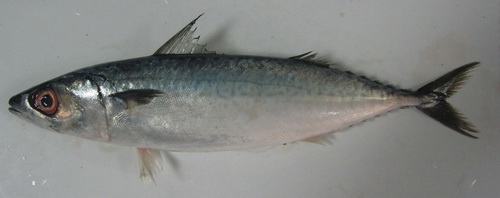
( Scomber japonicus by CHENG Qiqun, East China Sea Fisheries Research Institute, Chinese Academy of Fishery Sciences)
As one of the most important and familiar food fishes, Scomber japonicus (Perciformes : Scombridae) are generally predators of the open ocean, and are found worldwide in tropical and temperate waters.It is widely distributed in the coastal areas of northwestern Pacific Ocean, including China, Japan, and Korea peninsula. But, similar to what have happened to lots of other fishes, the strong fishing pressure and marine environment are pushing S. japonicus into an awkward position too. There are evidence indicate that S. japonicus might already being overexplioted.
In general, the knowledgement on population structure is essential to accurate evaluation and effective management of fishery resources. Up to date, due to the high economic value and importance of resource protection of S. japonicus, some researchers have used molecular markers to investigate the genetic structure of its population. But, till now, little is is known about the genetics of this speices along the East (ECS) and South China Seas (SCS). So, in a recent study, the research teams of Drs. CHENG Qiqun (East China Sea Fisheries Research Institute, the CAS of Fishery) and YANG Junxing (Kunming Institute of Zoology, the CAS) employed 11 microsatellite molecular markers to analyze the 6 S. japonicus populations sampled from the East and South China Seas for assessing intra-specific genetic structure.
This study revealed the relatively high levels of genetic variation within and moderate level of genetic differentiation among the populations. And it supported that two divergent stocks may exist: one included all populations from ECS extending to off eastern coast of Hainan Island in SCS, and the other comprised one population off southern coast of Hainan Island. All these indicated a higher gene flow and a preferential migration dispersion pattern for S. japonicus in ECS and this species had not undergone recent genetic bottlenecks.
Based on the above results, Dr. CHENG suggests to avoid future local overexploitation, it is necessary to select breeding from two different stocks to prevent inbreeding depression. More importantly, the sound genetic data provided by his study are of critical meaning for the reasonable utilization and development of rational management strategies for S. japonicus.
The main findings of this study have been published on Biochemical Systematics and Ecology, 2012, 42: 83–93.(http://dx.doi.org/10.1016/j.bse.2012.02.014,)
